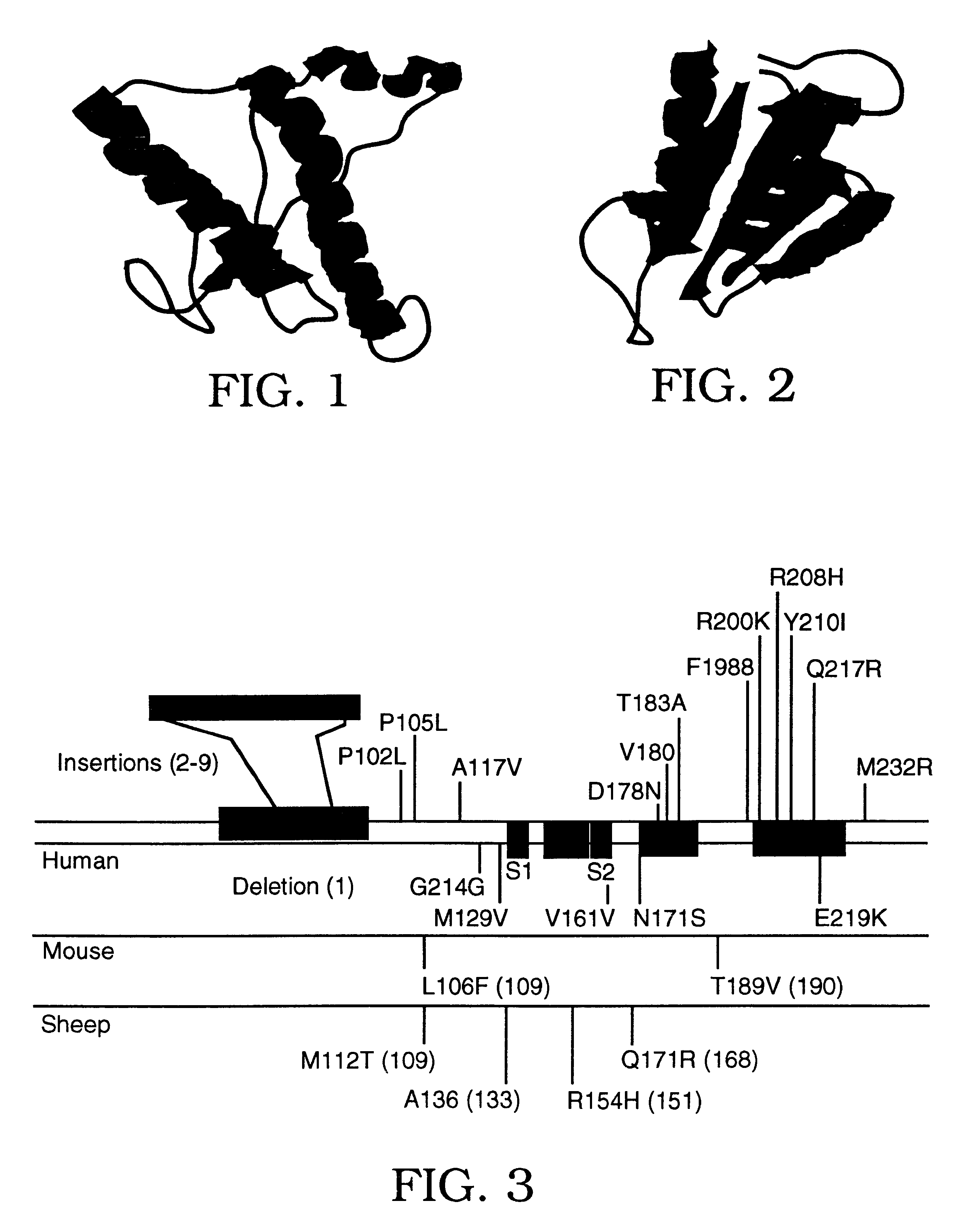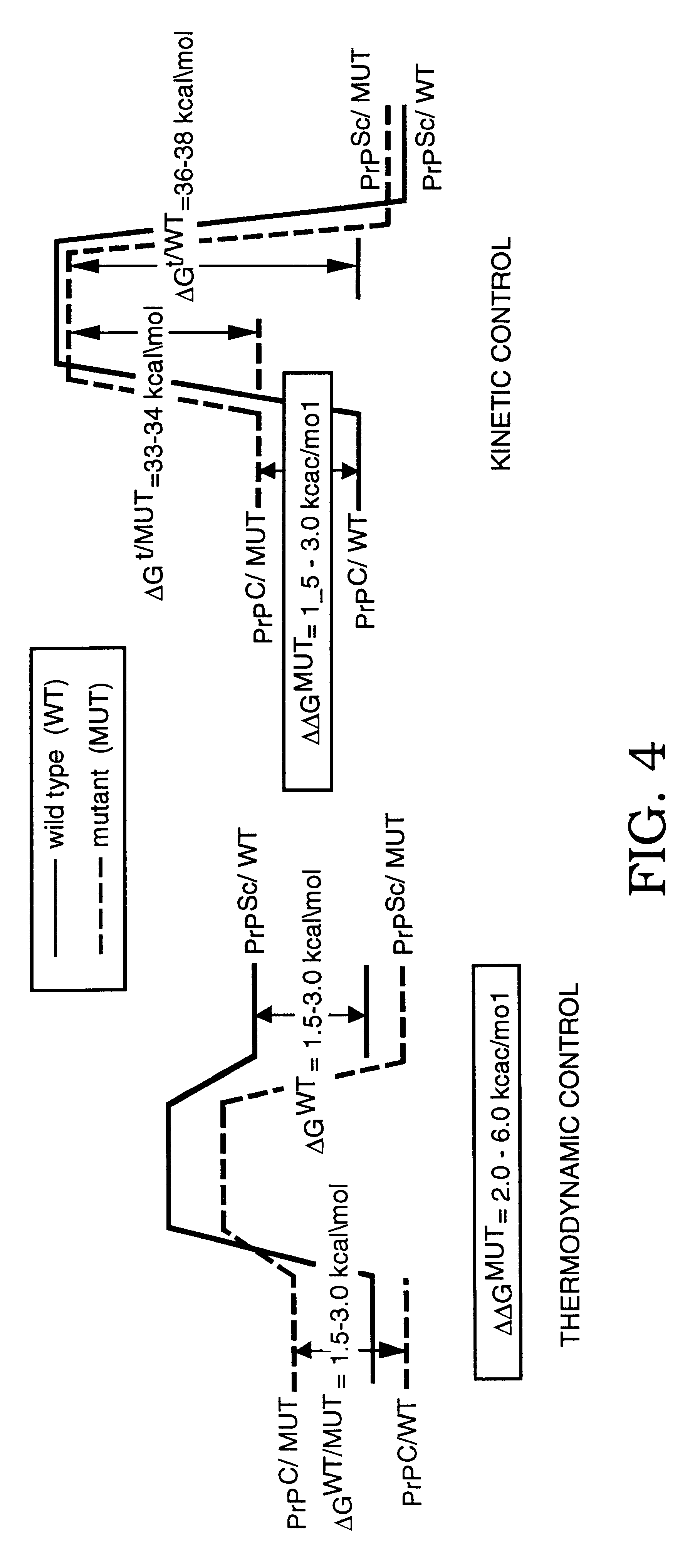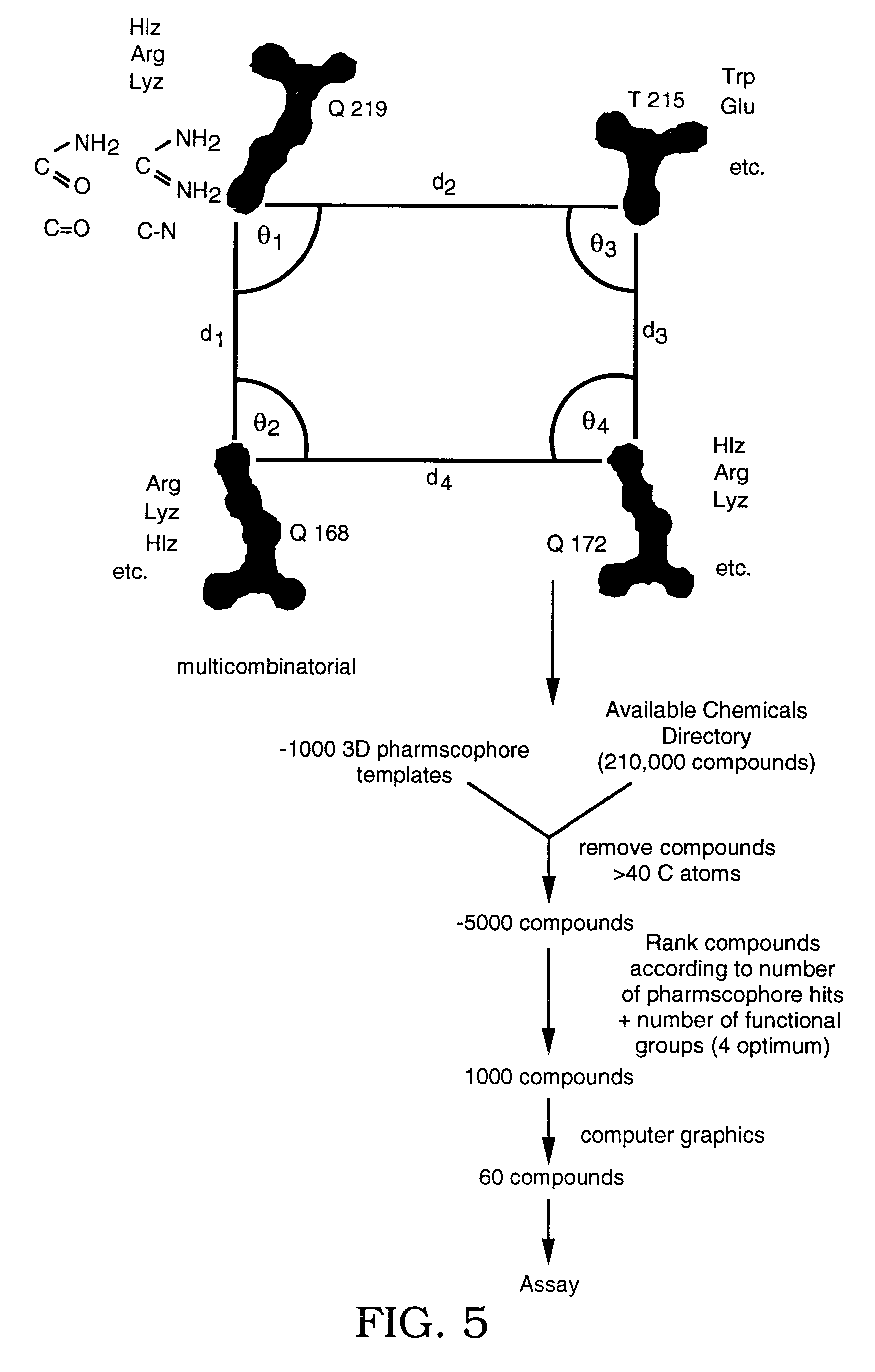Inhibitors of prion formation
a prion and inhibitor technology, applied in the field of prion formation inhibitors, can solve the problems of compound inability to cross the blood-brain barrier, compound inability to efficiently infect one species of animal (e.g., a human) and cannot efficiently infect another, so as to prevent prion disease or symptoms, and determine the infectivity of prions in a sample quickly
- Summary
- Abstract
- Description
- Claims
- Application Information
AI Technical Summary
Benefits of technology
Problems solved by technology
Method used
Image
Examples
example 1
Binding Site in PrP.sup.C for PPMF
An examination of the amino acids which distinguish Hu PrP from Mo PrP shows only seven residues at the C-terminus (168-231) that are different. Four ofthese residues are close to the glycophosphatidylinosytol (GPI) anchor attached to Ser231 while the remaining three residues were within or near the C-terminus of a postulated -helix which has been conformed by NMR structural studies. To identify the critical binding site within PrP.sup.C for PPMF the seven residues were divided into two groups: those at the C-terminal end of the last -helix (HuA) and those at the extreme C-terminus (Hub). The Mo residues were replaced with Hu counterparts in positions that were critical for binding of PrP.sup.C to Mo PPMF to determine the effect of such on inhibiting the formation of recombinant PrP.sup.Sc. Recombinant PrP.sup.Sc was distinguished from endogenous wild-type (wt) Mo PrP.sup.Sc by using the SHa / Mo chimeric PrP designated MHM2 that contains a binding si...
example 2
Identification of Inhibitory Pharmacophores
Alanine scanning mutagenesis (Wells, 1991, Methods Enzymol. 202:390-411) has been used to estimate experimentally the binding contribution of single residues to a protein-protein interaction. For prion replication, residues 168, 172, 215 and 219 on the surface of the human PrP.sup.C molecule contribute the most to the integrity of the PrP-PPMF interface. Indeed, substitution for basic residues at this site increases the affinity of PrP for PPMF sufficiently to block the replication cycle. Thus, those side chain sites define a plausible 3D pharmacophore target for mimetic design. In particular, the sidechain coordinates of residues Q168, Q172, T215 and Q219 from the PrP(90-231) NMR structure as well as the coordinates of residue Q168 when helix B is extended to residue 166.
Since basic residues at Q168, Q172 and Q219 and acidic or hydrophobic residues at T215 increase the affinity of PPMF for PrPC, Arg, Lys, His, Asp, Glu and Trp were modeled...
example 3
Targeting the Inoculum to the Caveolar Space of Neuronal Cells
From a variety of studies, it has become clear that PrP.sup.Sc formation is likely to take place in the caveolar space. However, there is no specific reason why the refolded .beta.-rich peptides should preferentially concentrate in this region. PrP targeted to clatharin coated pits is not converted into PrP.sup.Sc. Since PrP is GPI anchored, lipidating the C-terminus of a polypeptide pharmacophore should improve cell localization. Accordingly, the Mo 89-143, P101L peptide was myristylated and applied to cells. The lipidated peptide can then localize to the cell surface and be internalized into endocytic vesicles.
PUM
| Property | Measurement | Unit |
|---|---|---|
| incubation time | aaaaa | aaaaa |
| incubation time | aaaaa | aaaaa |
| incubation time | aaaaa | aaaaa |
Abstract
Description
Claims
Application Information
 Login to View More
Login to View More - R&D
- Intellectual Property
- Life Sciences
- Materials
- Tech Scout
- Unparalleled Data Quality
- Higher Quality Content
- 60% Fewer Hallucinations
Browse by: Latest US Patents, China's latest patents, Technical Efficacy Thesaurus, Application Domain, Technology Topic, Popular Technical Reports.
© 2025 PatSnap. All rights reserved.Legal|Privacy policy|Modern Slavery Act Transparency Statement|Sitemap|About US| Contact US: help@patsnap.com



